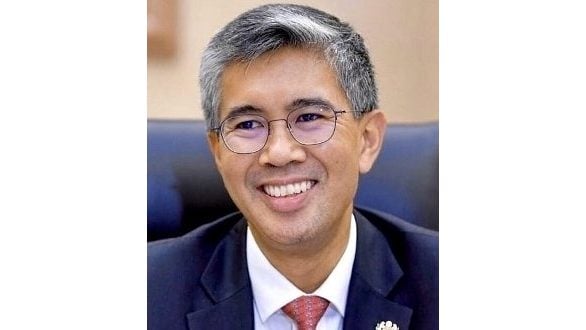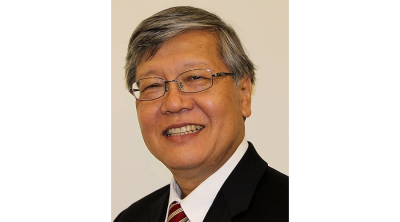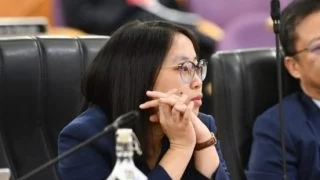
Posterity, I dare say, will regard the recently concluded ASEAN-Gulf Cooperation Council (GCC)-China Summit in Kuala Lumpur on 27 May 2025 as a historic turning point.
While the 46th ASEAN Summit and its related meetings like the 2nd ASEAN-GCC Summit were equally historic for their role in progressing ASEAN’s agenda, current trade wars and geopolitical fragmentation have somehow made many quarters perceive the inaugural ASEAN-GCC-China Summit as the gamechanger during the recent ASEAN gathering.
A potential ‘reconciler’ to the fragmented world
Malaysia could stand proud not merely for arranging such a smoothly run Summit, but also for the bridging of minds that have arguably emerged as key voices of the newly resurgent Global South, particularly through the successful issuance of a Joint Statement—usually the most difficult feat in any multilateral meeting.
As part of their Joint Statement, the ASEAN-GCC-China leaders condemned the continued atrocities on the people of Gaza and called for a ceasefire, echoing the sentiments of all right-minded peoples across the world.
Beyond politics, a deeper trilateral economic integration makes perfect sense. For context, the combined numbers for ASEAN, GCC and China speak for themselves: 2.15 billion people (or just over a quarter of the world’s population), and a collective GDP of almost US$25 trillion.
Figures for foreign direct investment (FDI) inflows, too, stack up nicely: In 2024, ASEAN attracted US$235 billion1 in FDI inflows, representing about 17 percent of global FDI. China received US$114.76 billion2, while the GCC secured US$70 billion3.
Collectively, these figures accounted for roughly 30 percent of global FDI inflows.”
From such data alone, the significance of this combined economic might was clear to the leaders from China and the two economic blocs.
ASEAN can be a strategic gateway to the East Asian markets. Malaysia, in particular, with our well-established trade and industrial ecosystem, rule of law and ease of investor journey is also well-poised to facilitate such investments into the broader ASEAN and East Asian markets.
The GCC’s economic dynamism, strategic location connecting Europe, Asia and Africa, and its shared religious and cultural values with Malaysia as well as ASEAN make it an ideal partner for deeper economic integration.
Indeed, in 2023, ASEAN’s trade with the GCC stood at US$130.7 billion and FDI inflows were US$390.2 million.
On a wider scale, China, as we know was ASEAN’s largest trading partner with US$696.7 billion in trade and US$17.3 billion in foreign direct investment (FDI).
China and the GCC are hence crucial economic partners for ASEAN and for Malaysia.
It therefore is totally appropriate for us to want to engage with them, both on a bilateral and trilateral format.
That is also why Malaysia will soon start negotiations for a free trade agreement (FTA) with the GCC, because there is so much potential to increase the current US$22billion4 total trade between Malaysia and the GCC.
How ASEAN deals benefit its people
But I want to go a bit more granular and show how engaging on an ASEAN-GCC-China scale can benefit ordinary Malaysians, including the youth, women and MSMEs.
Through the 18 Priority Economic Deliverables (PEDs) under the Economic Pillar of Malaysia’s 2025 ASEAN Chairmanship, the Ministry of Investment, Trade and Industry (MITI) and other related Ministries are working diligently to ensure substantial progress for these PEDs by year-end.
Some of these are of course directly linked to the GCC and China. For instance, we have completed negotiations to not only upgrade the ASEAN Trade in Goods Agreement (ATIGA) but also the ASEAN-China Free Trade Area (ACFTA) 3.0.
Both of these will be signed in October 2025, boosting both intra-ASEAN and ASEAN’s trade with China which as we know will be key to tide our region over during this period of geopolitical instability.
Separately, another of our PEDs, namely the Joint Declaration on Economic Cooperation Between the ASEAN-Gulf Cooperation Council (GCC) was also completed in full.
Through this, our two regions will explore new avenues of cooperation like market integration, sustainability, decarbonization, digital transformation and inclusion, including for MSMEs.
Sectorally, ASEAN’s PED on the Development of Policy Recommendations and Guidelines to Support ASEAN EV Implementation Roadmap will benefit from China’s global leadership in electrical vehicles (EVs).
Accounting for more than 70 percent of global electric car production in 20245, China also produced more than 70 percent of all EV batteries ever manufactured.
Consider also the Endorsement of the ASEAN Plan of Action for Energy Cooperation 2026-2030, which is clearly in alignment with the GCC’s ramping up of its efforts to diversify its economies and energy mix away from oil and gas in pursuit of renewable energy (RE).
They have pledged an US$100 billion investment in RE by 2030 to transition to clean energy and reduce carbon emissions.
There are, indeed, many synergies for economic integration. Development of ASEAN Tourism Outlook? China and GCC are key tourist markets for ASEAN. An ASEAN Framework for Integrated Semiconductor Supply-Chain (AFISS)? China is both a major chip buyer and maker.
In conclusion, when Malaysia proposed the PEDs for its Chairmanship year, we were clear on how we could boost the ASEAN’s socio-economic dynamism and ergo, the ASEAN-GCC-China trilateral relationship can likewise contribute to this.
Furthermore, global demand for halal products is currently valued at over US$3 trillion and will grow to US$5 trillion by 2030.
This is a market ASEAN, GCC and China can collaborate to tap on and even corner together.
Also, as previously highlighted, as a combined market of more than two billion people, ASEAN, GCC and China should be regions where young Malaysian men and women, including those in small business, look for job or business opportunities.
We are paving the way for all our Malaysian jaguhs to enter wider markets for their goods and services, while ensuring that their interests will always be safeguarded through well negotiated FTAs.
Deeper economic integration supports regional security
But one would argue that even spreading one’s wings to ASEAN really is just a way point for the truly ambitious.
While other regions may draw inwards, our three are seeking even greater connectivity for our people and businesses.
The coming together of ASEAN-GCC-China’s leaders signals that we refuse for our horizons to be limited—by ourselves or others—to our own borders or backyards.
Indeed, deeper economic integration would do well to better support regional security, which feeds into ASEAN’s Political-Security deliverables.
This is also why ASEAN—with its principles of centrality, neutrality, non-alignment—must matter to not only its Member States, but also to partners like the GCC, China and indeed, other Dialogue Partners like Australia, Canada, the European Union, India, Japan, New Zealand, the Republic of Korea, Japan and New Zealand.
Truth be told, what we can achieve together through this nascent ASEAN-GCC-China trilateral configuration is only limited by our imaginations.
1 UNCTAD; 2 State Council of PRC; 3 Khaleej Times; 4 For 2024. Source: MATRADE; 5 International Energy Agency (IEA) Global EV Outlook in 2025
(Tengku Zafrul Tengku Abdul Aziz is the Minister of Investment, Trade and Industry, Malaysia.)
ADVERTISEMENT
ADVERTISEMENT








































